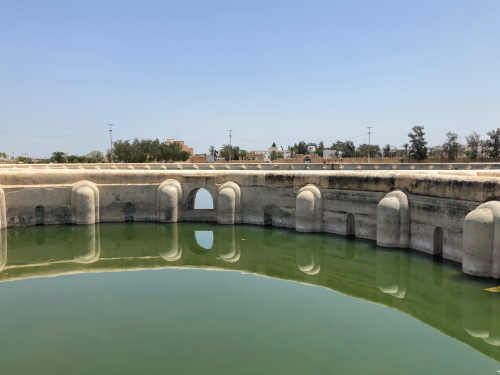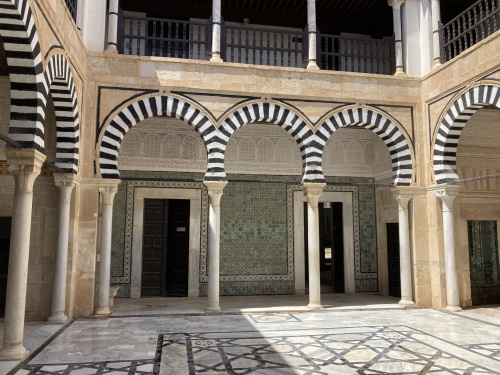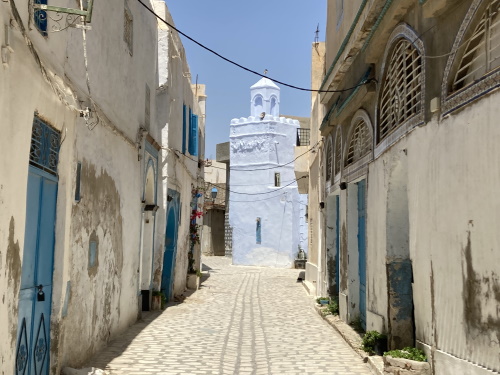Blog WHS Visits
WHS #789: Kairouan
I visited Kairouan on a half-day trip from Sousse by louage, the typical Tunisian minibus share taxi. The 60km distance is easily covered within an hour and a ticket costs only 5 Tunisian dinars (1.70 EUR). It was a scorching day, but still I managed to see all of Kairouan’s significant sights on foot – I walked the streets for 10km in total. With about 140,000 inhabitants, it is a fairly large city, located in a semi-arid region. Fortunately, there are many mini-markets where you can stop for a cool drink.
I started at the Aghlabid Basins, 1 of the 3 locations that make up this WHS. This is already quite a trek from the louage station. The Basins, large water reservoirs from the 9th century, were built outside the city walls and are fed by an aqueduct. I entered from the side, where the gate was open; the official entrance wasn’t and there were no tickets checked or sold. Local boys were using the reservoirs for swimming, although with plastic garbage floating in them this didn't look inviting. Still, I found the monumentality of the reservoirs quite impressive – the largest is 128m in diameter. Later I heard from the guide in Dougga that more basins have been found recently.
I then continued to location #2, the Zaouia of Sidi Sahib which shelters the remains of a companion of the Prophet. It is a white, domed building just inside the city walls. I found it closed for entrance, but there’s another Zaouia, that of Sidi Abid Al Ghariani, deeper into the medina. Here I was allowed in, even without a ticket. After a reception room with benches covered by green, blue, and yellow tiles, you enter a courtyard with black-and-white arches. It opens up to several rooms, including the one where the tomb is. That one has a pretty wooden ceiling with multiple layers of ornamentation.
The Great Mosque I left for last, and here I could finally buy the 12 dinar entrance ticket that covers 6 sites in Kairouan. Its ancient origins (in an Arab-Muslim context, so from the 7th century onwards) and theological schools gave the city holy status. Kairouan’s current inhabitants don’t seem to be overly pious, nor was the mosque busy. The ambiance was more museum-like than religious, although it must be said that as a non-Muslim I was not allowed into the prayer halls (who knows what happens there).
What you can admire in the porticoes around the courtyard are ‘better’ remains of Carthage than at the current archaeological site itself. The Punic-Roman city was one of the sources for the rows of columns in various marbles and granite. Also, stones with inscriptions in Latin were reused, upside-down, to construct the walls.
In between these main sights, I enjoyed strolling through the quiet medina. Overall, I found the hassle factor higher than in the medinas of Tunis or Sousse, where it was barely existent. It consisted of harmless “Hey, where are you from?”-calls and invitations to visit carpet shops. Still, I found the medina in Kairouan the best of the 3. The streets here are wider than in the medinas of Tunis or Sousse. Many of the white buildings have light-blue colour accents, such as doors or towers.
Els - 22 May 2022
Comments
brodhealth 16 April 2024
%www.kairouan.online%
ghj 16 April 2024
www.kairouan.online


